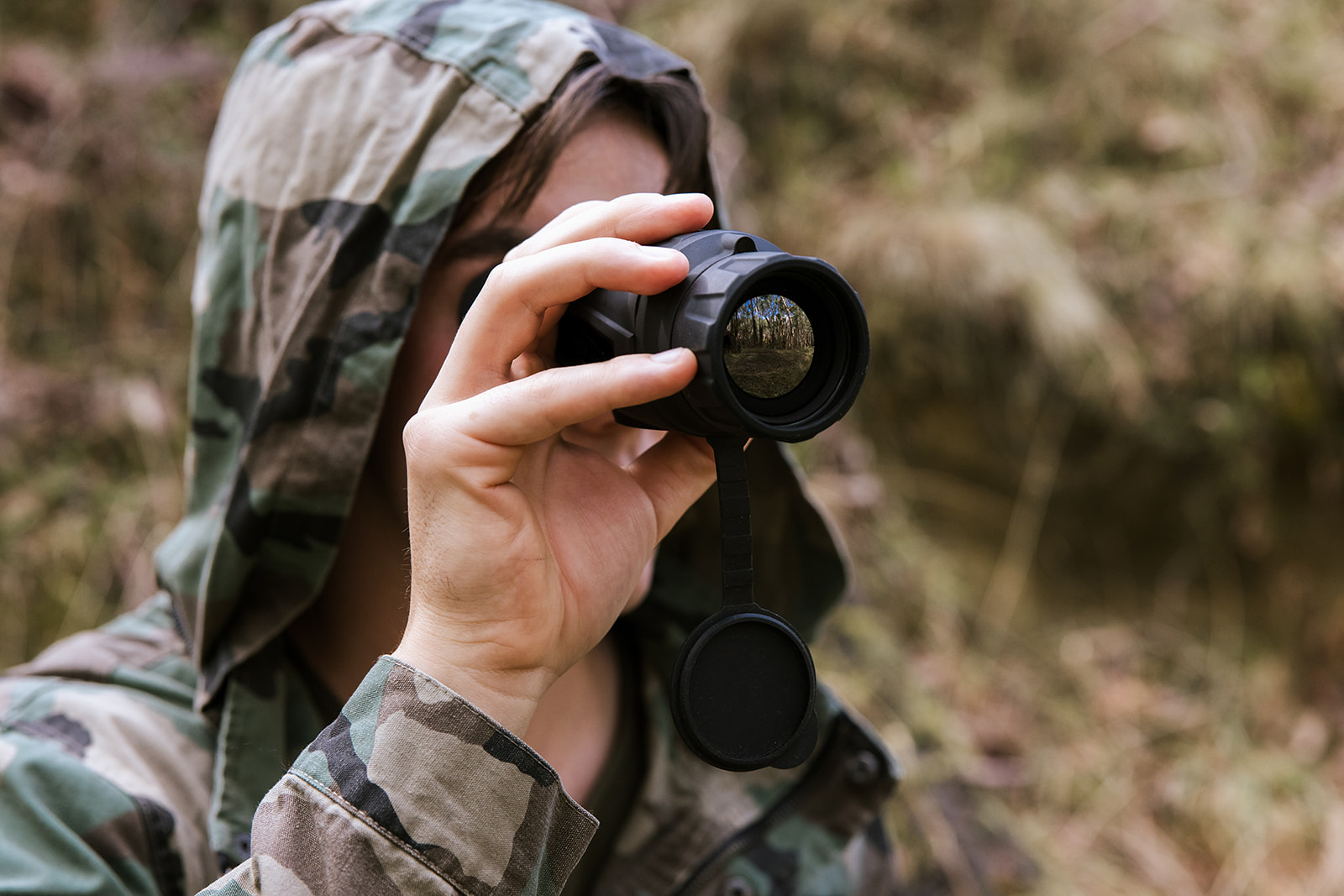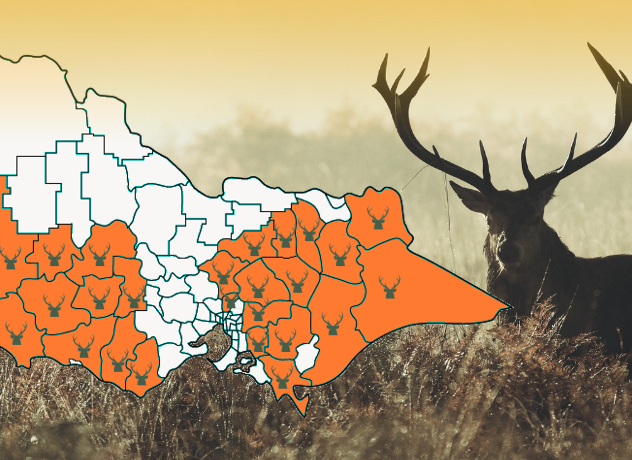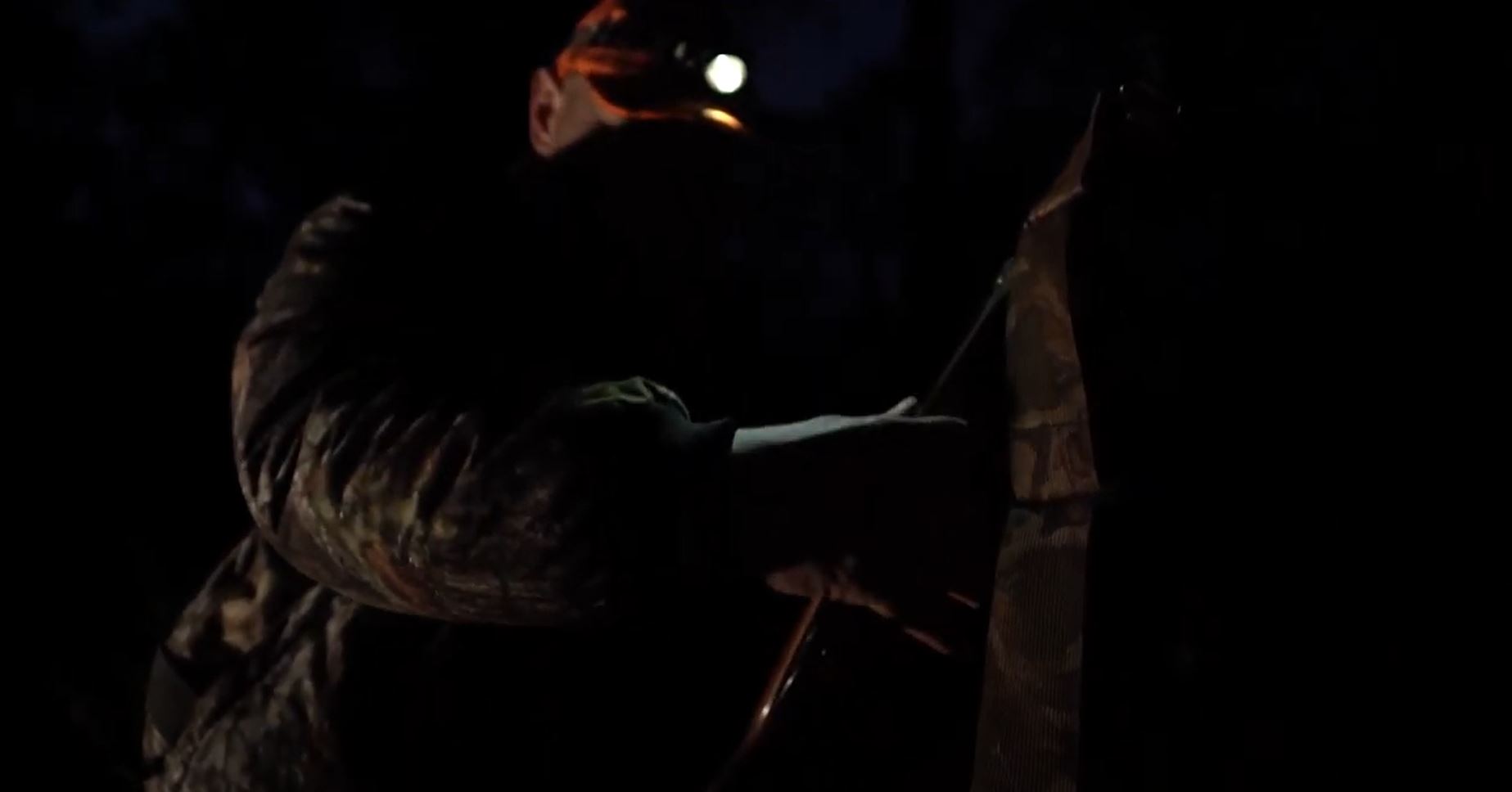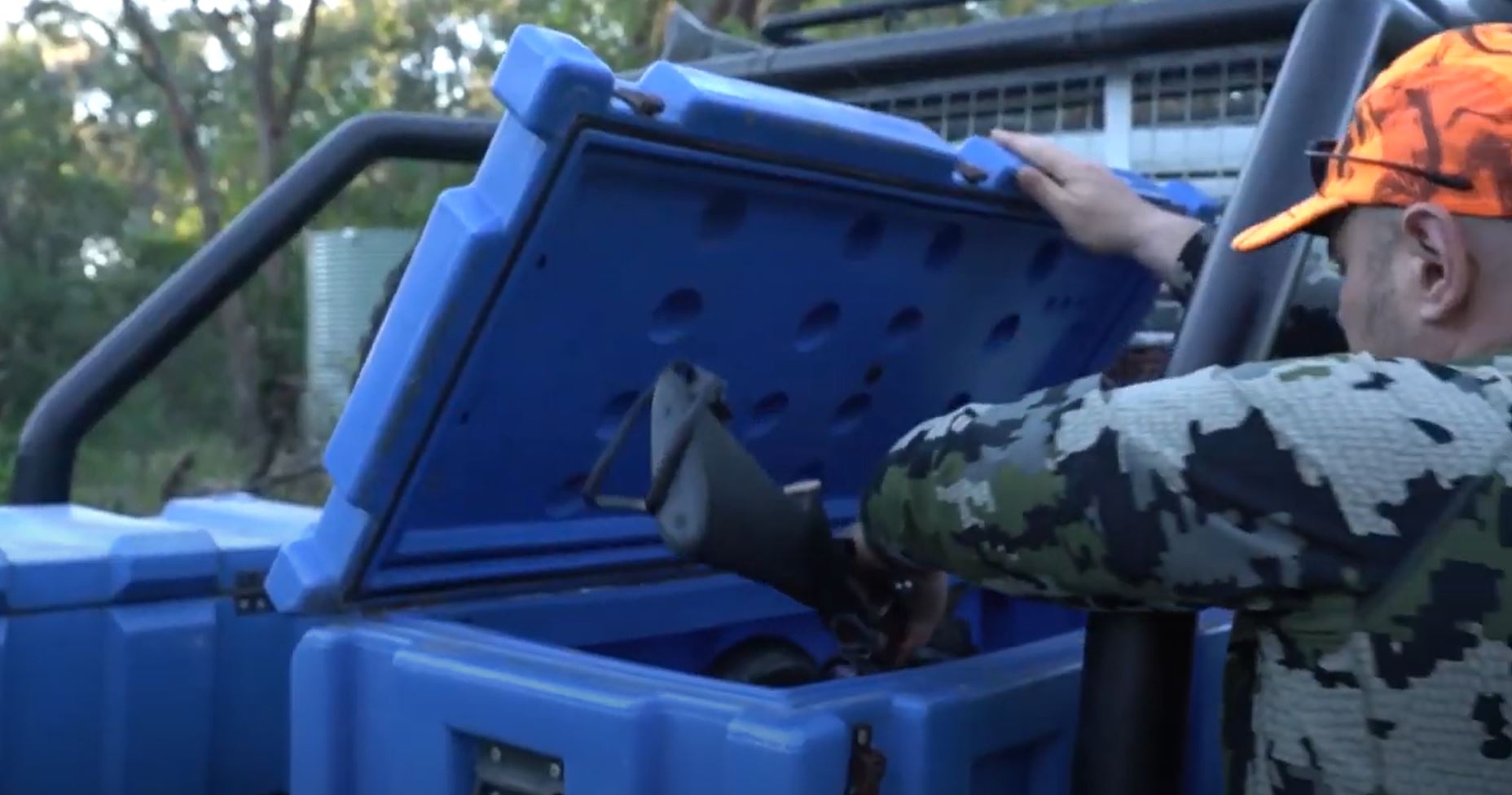Deer hunting methods

To recreationally hunt deer in Victoria, deer hunters need to abide by the hunting laws found in the Wildlife (Game) Regulations 2024 and the Wildlife Act 1975.
There are other general hunting laws contained in other acts on land management, firearms, and animal welfare.
Deer hunters must also follow the approved hunting methods and use the approved equipment, comply with bag limits (Hog Deer), seasons (for Hog Deer and hound hunting), and hunting times (no recreational night hunting); and must have a current Game Licence endorsed for hunting deer: either stalking and/or hunting Sambar Deer with hounds.
The following are the minimum legal requirements for firearm, bow, and crossbow equipment when hunting for deer in Victoria.
Firearm/Bow | Sambar, Rusa, and Red Deer | Hog, Fallow, and Chital Deer |
|---|---|---|
| Centrefire rifle | A minimum calibre of .270" (6.85 mm) with a minimum projectile weight of 130 grains (8.45 grams) | A minimum calibre of .243" (6.17 mm) with a minimum projectile weight of 80 grains (5.18 grams) |
| Muzzle-loading rifle | A minimum calibre of .45" (11.45 mm) with a minimum projectile weight of 230 grains (14.91 grams) | A minimum calibre of .38" (9.65 mm) with a minimum projectile weight of 200 grains (12.96 grams) |
Long, recurve, and compound bows | A minimum draw weight of 50 pounds (22.5 kilograms), using an arrow fitted with a broadhead having a combined minimum weight of 400 grains (26 grams) and at least two cutting blades | A minimum draw weight of 45 pounds (20 kilograms), using an arrow fitted with a broadhead having a combined minimum weight of 350 grains (22.5 grams) and at least two blades |
| Crossbow | A minimum draw weight of 150 pounds (68 kilograms), using a bolt fitted with a broadhead having a total minimum weight of 400 grains (26 grams) and at least two blades | A minimum draw weight of 120 pounds (54.4 kilograms), using a bolt fitted with a broadhead having a total minimum weight of 350 grains (22.5 grams) and at least two blades |
Smooth-bore firearms | A minimum bore of 20 and a maximum bore of 12, using a single solid projectile with a minimum weight of 245 grains (15.88 grams); SG’s (buck shot) must not be used. The firearm must be fitted with a front and rear iron sight (other than a beaded sight or sights), a telescopic sight, or a reflex sight. | A minimum bore of 20 and a maximum bore of 12, using a single solid projectile with a minimum weight of 245 grains (15.88 grams); SG’s (buck shot) must not be used. The firearm must be fitted with a front and rear iron sight (other than a beaded sight or sights), a telescopic sight, or a reflex sight. |
Under the Wildlife (Game) Regulations 2024, hunters are permitted to use deer decoys to assist in hunting deer. Deer decoys must be painted or fixed with a fluorescent orange colour that is highly visible on the heart, lungs or torso of the deer of a cumulative area no smaller than 0.25 square metres.
 Under the Wildlife (Game) Regulations 2024, hunters can use a hand-held thermo-imaging device during the day (i.e. 30 minutes before sunrise to 30 minutes after sunset). These devices must be hand-held only and cannot be fitted to the firearm or a fixture attached to the firearm. Thermal rifle scopes must not be used when attached to a fiream.
Under the Wildlife (Game) Regulations 2024, hunters can use a hand-held thermo-imaging device during the day (i.e. 30 minutes before sunrise to 30 minutes after sunset). These devices must be hand-held only and cannot be fitted to the firearm or a fixture attached to the firearm. Thermal rifle scopes must not be used when attached to a fiream.
Hunters can use a hand-held thermo-imaging device to help locate and identify deer in the field. Hunters must then put aside the thermo-imagining device, ensure that they have positively identified their target and that there are no other people, animals or property/assets in the direction of fire before shooting.
It is unsafe to identify a target by its thermal properties alone; hunters must ensure they positively identify their target and what's behind it and are encouraged to use other tools such as binoculars. A hand-held thermo-imaging device alone is not an acceptable way to identify a target, especially in thick vegetation.
Safe target identification is solely the responsibility of the hunter. If in doubt, don’t shoot.
Hunting Deer with Gundogs or Deer hunting dogs
Hunters may use a trained dog to help them locate, flush, point, or trail deer. Dogs can be of particular use when locating downed animals that could be lost. Hunters must be able to train their dog(s) to a level that allows the dog to complete its hunting task without chasing other animals and/or attacking the deer being hunted.
- Dogs can be used only on land classifications that permit people to be in possession of dogs (e.g. dogs cannot be taken into National Parks).
- Hog Deer cannot be hunted with the aid of dogs.
- However, all other deer species can be hunted with the aid of gundogs or approved deer hunting dogs.
- Deer hunters cannot hunt with more than two gundogs or deer hunting dogs, individually or with a team of hunters.
Hunting Sambar Deer with hounds
- Deer hunters must have an endorsement on their Game Licence to be allowed to hunt with hounds.
- Hound hunting is seasonal, with the season starting on 1 April each year and ending on 30 November.
- When Easter falls within the season, hound hunting is closed from the Thursday before Easter until the Thursday after Easter, inclusive.
In Victoria, Hog Deer hunting is permitted under strict regulations to ensure the species is hunted sustainably.
Hog Deer are a highly valued game species, and bag limits are set to allow hunters to take one male and one female Hog Deer per season.
The Hog Deer season is open only in the month of April each year (i.e. 1–30 April).
Before hunting Hog Deer, hunters must obtain Hog Deer tags from the Game Management Authority. Each hunter is issued two tags: one male and one female. These tags are issued to a hunter and cannot be lent or sold, and can only be used in the season they were obtained.
When a Hog Deer is taken, the Hog Deer tag must be immediately attached to the hind leg.
You cannot possess a Hog Deer without the tag being attached. Tags cannot be removed until details have been recorded at a checking station. Checking stations have been established to monitor the take of Hog Deer and provide information on the health of the Hog Deer population.
All harvested Hog Deer must be presented to a checking station within 24 hours of being taken.
At a checking station, hunters will be asked to produce their Game Licence, and details are recorded.
The harvested deer will have shoulder height, girth, length, and weight recorded. Stags will have the antlers measured and photographed. The reproductive condition of hinds will be recorded. Samples may also be taken; this includes the removal of the jaw bone for ageing purposes.
Completed Hog Deer tag return forms must be sent to the Game Management Authority within 28 days of the last day of the open season.
There are balloted Hog Deer hunting opportunities which occur outside the April season (usually February, March, and May) and in areas where hunting is usually prohibited. Currently these areas are Blond Bay State Game Reserve, Boole Poole Peninsula within Gippsland Lakes Coastal Park, and Snake Island within Nooramunga Marine Coastal Park.
The ballot is administered by the Blond Bay Hog Deer Advisory Group.
When hunting deer, it is an offence to:
- hunt deer at night (defined as 30 minutes after sunset until 30 minutes before sunrise)
- hunt deer with the use of a spotlight (except for a hand-held thermo-imaging device that is not fitted to the firearm or a fixture attached to the firearm and only used during the day)
People must not to be in possession of a firearm and spotlight between 30 minutes after sunset until 30 minutes before sunrise in recognised deer habitat (see below for a list of areas).
However, there are certain situations where deer hunters can be in possession of a firearm and spotlight in a vehicle. That is where their firearm/s and ammunition are secured separately in a vehicle and the spotlight is not in use. While on foot, their firearm must be unloaded, ammunition is stored in an appropriate case or container and the spotlight is not fitted to the firearm or a fixture attached to the firearm. See below for more details.
The aim is to address illegal spotlighting without impacting on deer hunters genuinely using torches, lanterns or headlamps for safety, domestic or emergency purposes.
Possession of a spotlight and firearms when in a vehicle
Hunters travelling in vehicles between 30 minutes after sunset until 30 minutes before sunrise in recognised deer habitat can be in possession of a firearm and spotlight as long as:
- The firearm is unloaded and stored in a securely fastened case or container (e.g. gun bag or gun case) that is stowed in the boot or storage area of a sedan, dual cab, or wagon and is not readily accessible to any occupant of the vehicle.
- For utes or single cabs, the firearm is unloaded and stored in a securely fastened case or container and stowed in a part of the vehicle not readily accessible to any occupant of the vehicle. The best approach here is to fit a lockable steel box to the tray and store the firearm in there.
- Any ammunition is stored separately (but not in a glove box) and is in a part of the vehicle not readily accessible by an occupant of the vehicle. Any spotlight in or on the vehicle is not in use.
This video explains when hunters travelling in vehicles can legally be in possession of a firearm and spotlight in recognised deer habitat.
Possession of spotlight and firearm when on foot
Hunters on foot in recognised deer habitat between 30 minutes after sunset and 30 minutes before sunrise in recognised deer habitat can use an artificial light (e.g. torch or headlamp) for on-foot navigation purposes as long as:
- The firearm and magazine is unloaded, meaning all cartridges must be removed from the firearm and any magazine.
- Ammunition is stored in a closed case or container. This could include a backpack or cartridge case.
- Any artificial light or thermos-imaging device is not fitted to the firearm or fixture attached to the firearm. No spotlight can be fitted to any part of the firearm or a scope or other fitting attached to the firearm.
This video explains when hunters on foot can legally be in possession of a firearm and spotlight in recognised deer habitat.
Spotlights in Recognised Deer Habitat
The Wildlife (Game) Regulations 2024 have added two additional local government areas as “recognised deer habitat” - West Wimmera and Moyne Shire Councils - in recognition of the expansion of deer into new areas.
Recognised deer habitat is defined as all areas of Crown land in the following Victorian municipalities:
- Alpine Shire Council
- Ararat Rural City
- Baw Baw Shire Council
- Benalla Rural City Council
- Cardinia Shire Council
- Colac-Otway Shire Council
- Corangamite Shire Council
- East Gippsland Shire Council
- Glenelg Shire Council
- Horsham Rural City Council
- Mansfield Shire Council
- Mitchell Shire Council
- Moyne Shire Council
- Murrindindi Shire Council
- Northern Grampians Shire Council
- Pyrenees Shire Council
- South Gippsland Shire Council
- South Grampians Shire Council
- Strathbogie Shire Council
- Towong Shire Council
- Wangaratta Shire Council
- Wellington Shire Council
- West Wimmera Shire Council
- Whittlesea City Shire Council
- Yarra Ranges Shire Council
There are laws that require you to store or carry firearms, ammunition and spotlights in a particular way when you are in or travelling through recognised deer habitat 30 minutes after sunset until 30 minutes before sunrise. The requirements are different if you are in a vehicle or on foot.
For detailed information on the boundaries of these areas, visit: https://www.viccouncils.asn.au/find-your-council/council-map
Exemptions From Spotlight Regulations
- Persons using hand-held thermo-imaging devices during the day (i.e. between 30 minutes before sunrise until 30 minutes after sunset) that are not fitted to a firearm or a fixture attached to the firearm.
- Landowner/occupiers or their agents on private land acting in accordance with the unprotection order for deer on private land (Unprotection-Order-Wildlife-on-private-property.pdf (gma.vic.gov.au)). For more information see Unprotection of deer on private property - Game Management Authority (gma.vic.gov.au)
- Landowners/occupiers or their agents or persons accompanying landowners/occupiers or agents who are using a spotlight for the purpose of controlling pest animals to a distance of 250 metres outside the property boundary.
- The holder of an Authority to Control Wildlife or other authorisation issued under the Wildlife Act 1975 who is acting in accordance with that authorisation.
- Persons acting in accordance with an authorisation order under the Wildlife Act 1975. This includes public land managers, police officers and their agents and registered veterinarians acting in accordance with the WILDLIFE (CONTROL OF DEER ON PUBLIC LAND) ORDER NO. 1/2022 (GG2022S568.pdf (gazette.vic.gov.au). For more information, contact the Department of Energy, Environment and Climate Action.
Under the Wildlife (Game) Regulations 2024, if a person shoots a deer and it is alive after being struck, the person must make all reasonable efforts to immediately dispatch that deer.
Spotlights in Recognised Deer Habitat (instructional videos)
Page last updated: 28 Nov 2024


